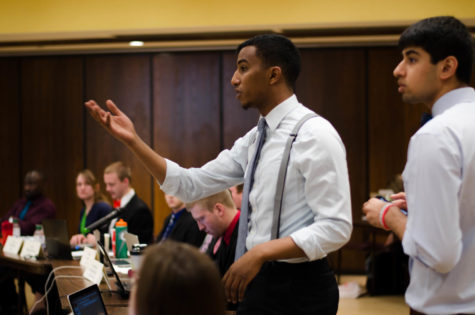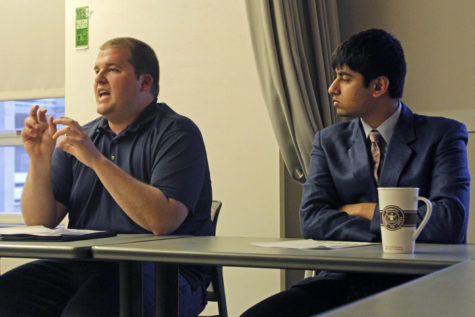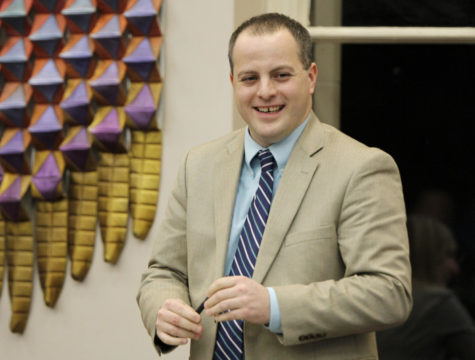The question of unity vs. diversity
March 9, 2001
With President Bush’s honeymoon over and House Minority Leader Dick Gephardt declaring the “end” of bipartisanship, it’s time to look at who exactly is served by this happy fantasy of Bush and Congress working together.
The American people like their government to get along. We’re all sick of Congressional votes split along party lines, and especially during the 2000 election battle, it was tiring to hear the repetitive rhetoric of partisans who seem to all share the same soundbite writers.
But if everybody agreed with each other, a lot of important issues wouldn’t be heard.
In fact, the whole point of House districts is to represent the diversity of opinions between different opinionated areas of America – rural, urban, suburban, South, New England, West Coast and Midwest.
Apparently, Gephardt’s declaration that bipartisanship is over is based on some ergonomics rule few Americans have ever heard of.
“House Minority Leader Richard Gephardt said Wednesday that debate on ergonomics regulations signaled the end of congressional bipartisanship,” CNN.com reports. “Gephardt said the passage of a bankruptcy bill, an expected House vote on Thursday on the first component of President Bush’s tax cut, and what Democrats see as a hastily scheduled vote on the ergonomics rule indicated the White House was no longer demonstrating a desire to work together with Democrats.”
(However strange it sounds, ergonomics is a passionate, bitterly partisan issue in Washington.)
Bush came into office on a platform of bipartisanship, with “compassionate conservative” and “uniter, not a divider” among his many catchy campaign slogans.
It’s true, he’s kept his promise to some extent, trying to limit Republican add-ons to his tax plan among other things. He even invited Sen. Teddy Kennedy and his family over to the White House to watch the JFK movie “Thirteen Days.”
However, Bush has still maintained most of the conservative values that won him the Republican presidential nomination.
Combining moderate actions and Cabinet selections with some conservative policies, such as trying to get the government to pay for churches’ social programs, Bush is trying to strike a balance between the “compassionate” and the “conservative.”
This has paid off to some extent; Bush’s public-opinion ratings have been rising since he entered office, but pundits on both ends of the political spectrum have found much to criticize him for.
With the national government and many other issues, lately the American people have been finding themselves caught between two conflicting ideas of how to deal with differences among the population: unity and diversity.
Instead of the old idea of America as a melting pot, many have switched the metaphor into America as a tossed salad.
A melting pot is the symbol of unity, with all the different values and traditions of the diverse groups of immigrants blending together to create one single national culture.
In the new tossed salad image, different cultures come together but retain their individual aspects.
Can you have unity – everyone joined together – and diversity – separate identities – at the same time?
Since these two concepts have become such buzzwords lately, especially in our governmental and educational systems, it’s a particularly interesting question.
Take the issue of specialty seats, for example.
The argument was over whether to keep Government of the Student Body seats designated for special groups – nontraditional students, international students, students with disabilities and ethnic minorities.
This was another question of unity vs. diversity. Having special seats to speak for different minority groups was a way of trying to accommodate for diversity at Iowa State.
Unity, on the other hand, would be having all senators represent all people – or at least, for example, all College of Design senators representing all design students and all Union Drive Association senators representing all students who live in UDA.
However, as is often the case, this diversity came at a cost of unity. When a student registered to vote for a specialty seat position, he had to give up a vote for the GSB senator representing either his college or where he lived.
How can we have unity when to register as a minority you give up your right to count yourself (for voting purposes) as a member of your college or living area?
How can we get liberal arts, College of Ag, Towers Residence Association and off-campus senators to address the needs of nontraditional, international, disabled and minority students when there are already special senators to focus on their concerns?
Due to a confusing ballot as well as a ridiculous rule that an abstention from voting on the specialty seat referendum is counted as a “No” vote, we didn’t get a fair measure of the student’s opinion on this issue.
But in the coming years, as white people become the minority, we’ll find ourselves trying again and again to figure out how diversity and unity can fit together.
Jocelyn Marcus is a junior in English from Ames. She is opinion editor of the Daily.









